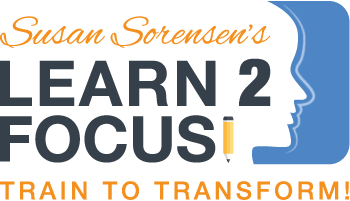8 Signs That Your Child Suffers from Sensory Processing Disorder
/Imagine if your senses simply refused to be honest with you.What if your skin told you the sweater you were wearing was actually hurting you?What if your body told you the people standing in line with you were too close and closing in on you?Your senses are meant to work in harmony.
Children with sensory processing disorder (SPD) are deprived of that ability.
Reading the world accurately is extremely difficult for a child who can’t rely on what he or she sees, hears, or feels.
Focus, attention, and learning may be continually affected without diagnosis and treatment.
If it seems that your child is constantly melting down in response to sounds, touch, food, or light, he or she may be experiencing a hypersensitivity to sensory information.
If your child underreacts or seeks out increasing amounts of sight, sounds, and touch, this is referred to as sensoryhyposensitivity.
SPD requires close attention and may be addressed with proper treatment.
Consider the list below for 8 key signs to look for:
1. Reaction to touch is out of proportion.
Hypersensitive children find clothing seams and tags are constant irritants.
Combing hair, nail cutting, and other grooming habits tend to be very annoying or expressed as painful. Certain clothing fits and styles are often intolerable too.
Hyposensitive children tend to crave a lot of touch. They seek out highly textured surfaces and enjoy messy playtime. They also tend to be unaware of light touch and minor injuries. They tend to play rough, unaware of their own strength.
2. Response to light and certain sights is problematic.
Many children with SPD shield their eyes from light or sudden changes in lighting. Blinking or squinting is common. Visual patterns may prove particularly distracting.
3. Sounds garner unusual or heightened responses.
Background noise may confuse or distract. Hypersensitive children often exhibit a strong fear reaction to abrupt, loud, or high-pitched sounds.
4. Skewed responses to food and oral activity are frequent.
Hypersensitive kids may respond intensely to food textures, gagging or drooling. Teeth brushing and flossing is irritating. Speech or language delays are often present.
Hyposensitive children may chew or suck non-food items habitually.
5. Problems with body awareness are common.
Hypersensitive children often feel crowded, resist hugs, and avoid games like “tag.”
Being off the ground is bothersome. They avoid swings and climbing activities.
Poor balance and posture is also apparent.
Hyposensitive kids are persistently “touch-feely” and don’t grasp personal space.
They exhibit risky, “dare-devil” play styles. They tend to be fidgety, clumsy, and uncoordinated.
6. Poor attention and focus are often apparent.
Tuning out during conversation with adults or peers may frequently get SPD children into trouble. Daydreaming is a frequent pastime. He or she may disrupt class or not participate at all.
7. Emotional expression is extreme.
Depending on sensitivity, some children are easily frustrated and impulsive, functioning best with fewer people or alone. They have difficulty expressing their needs and tend to be very moody and prone to tantrums.
8. Difficulty with self-confidence and independence
SPD makes following a sequence of directions difficult, hindering learning and competence. The disorder also inspires a strong need to keep routines from being disrupted and manage unfamiliar sensory input. This undermines a sense of independence and exploration.
Children learn through their senses. Misinformation due to faulty processing, affects the way they interpret and operate in the world.
Recent research indicates that sufferers of SPD may benefit from work with an occupational therapist and treatments like Interactive Metronome, plus The Listening Program, which involves listening to acoustically-modified instrumental music through Waves™ multi-sensory audio system for stress reduction, improved focus, self-regulation, learning, memory, and more.

